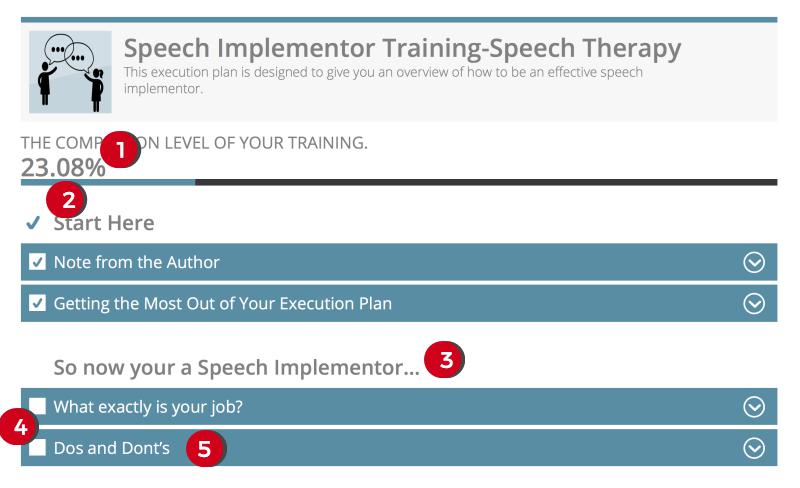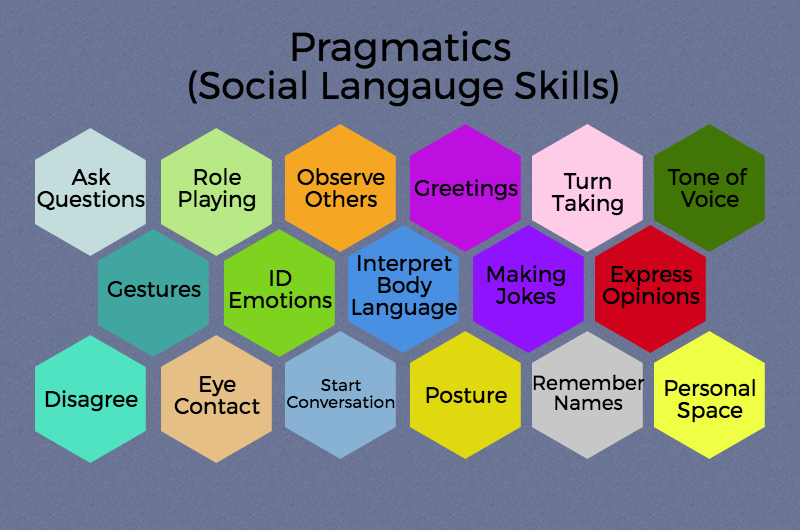
SLP-A & Speech Implementor Training- Language Therapy
Start Here
Note from the Author
I’ve been in working in speech-language pathology since 2004 and I’m thrilled to be your guide throughout this Execution Plan.
While working in a hospital setting, schools, and private practice I’ve worked with children with all sorts of disorders, syndromes, and delays.
I have worked with speech implementors the past ten years and have developed our systems in such a way that folks without any background in communication disorders, special education, or even regular education can implement our plan and achieve successful outcomes with students.
Use what you learn in this Execution Plan to plan to have high-quality therapy sessions, effective communication with other IEP team members, and feel confident about your ability to help your students.
Ready?
Let’s get started!
 Dan McCool
Dan McCool
Owner/Speech-Language Pathologist
Ozark Therapy Institute, LLC
Getting the Most Out of Your Execution Plan
Here’s how to get the most out of the content in this Execution Plan,
- Read the entire EP once – Read through this entire EP, watch any videos and download the resources. Don’t execute on the steps until you have finished reading the entire EP. This will help you understand the progression of the steps and put them into context.
- Complete the steps – This Execution Plan is a checklist. Each step builds upon the next. Complete each step in order.
Lastly, here’s how to use the Execution Plan interface.
View the example Execution Plan below…

- Progress Bar – The Progress Bar shows you the percentage of the Execution Plan you have completed.
- Check boxes – Click the check box to indicate completion of a Course Step or Course Section.
- Course Sections – An Execution Plan is a series of steps that lead to the completion of milestones. In this EP there are four milestones entitled Start Here, Pre-Launch, Launch and Post-Launch.
- Course Steps – Each Course Section contains multiple steps.
- Arrows – Use the Arrow Buttons to open and close the Course Steps in the Execution Plan.
Speech and Langauge Intro
What is Langauge Therapy? (and what is not!)
Intro Video
Comprehension
Comprehension comes first
In normal language development, comprehension comes before expression.
A child is much more likely to comprehend language before they can verbally respond or articulate their thoughts.
Comprehension in the classroom is essential because this is how they process the teacher’s instruction, grasp questions. If a child doesn’t comprehend what is going on in the classroom then learning has stopped.
How do we work on comprehension?
Comprehension is addressed using a scaffolding approach-
- we start very small
- provide a significant support for them to succeed.
For instance, if a child is very low functioning and they have a small vocabulary, we may place two objects in front of them- a doll and a book. They therapist will tell the child “Show me the book.” If they child provides an incorrect answer or doesn’t answer at all, the therapist will ask again or provide some assistance
- As the student succeed the tasks become larger and less support is provided.
How do we help children improve comprehension
We provide assistance to students with comprehension issues by providing…
- Auditory Cues
- Visual Cues
- Tactile Cues
We can also increase the probability that a student will answer correctly by…
- Decreasing the number of choices that are available
- Decreasing the number of elements a child needs to process
We use activities like…
- Following directions
- retelling stories
- Answering questions (verbally and nonverbally)
- Summarizing
- Identify objects
Expression
Expression in Children
Expression is the output of thought. This can happen verbally and nonverbally. When expression happens verbally it can include words, laughter, groans and moans, or happy squeals.
Expression can be very simple such as crying, or maybe complex multi-word utterance with nouns, verbs, adjectives, adverbs, articles, participles, copula verbs, pronouns, negation, etc.
We work with students that have a language delay or langauge disorder. Difficulty with Expression can be particularly frustrating because students are not able to convey their thoughts and ideas to teachers and peers. Folks with expressive language problems often have difficulty making friends since others can’t understand them. Frequently, they have poor academic performance because they having difficult conveying their ideas or what they have learned.
Pragmatics
What is Pragmatics?
Achieving balance
Achieve Balance? What does that mean?
When
Strategies to Improve Pragmatics

Board games that promote pragmatics
- Cariboo
- Zingo
- Guess Who
- Check out this link for more suggestions
Work on greetings with familiar people
101 Ways to teach Children Social Skills [Ebook]- Resource with some great suggestions.
Practice asking socially appropriate questions?
Executive Function
What is Executive Functioning?
ldonline.com defines executive function as “… a set of processes that all have to do with managing oneself and one’s resources in order to achieve a goal. It is an umbrella term for the neurologically-based skills involving mental control and self-regulation.”
While Executive funciton is huge top and is a determining factor on a students ability to succeed in school (and in life), we can boil it down to three essential components-
- Attending- Pay attention to the important information.
- Inhibit-Inhibit what is irrelevant or destructive.
- Remember- Use working memory.
What is executive Functioning and why is it important for students?
Strategies for working on executive functioning.
Semantics
Identification and labeling of….
When working on increasing a students Semantic skills we are really working on their vocabulary. While the exact process of normal vocabulary development can be complex we will boil it down to the essentials.
To increase vocabulary we work on identifying (receptive language) and labeling (expressive language).
Much of the time we start with a focus on identifying and labeling curriculum relevant and personally relevant objects and actions.
When they have demonstrated proficiency with that task, it is appropriate to move to identification and labeling of categories, attributes, functions, and providing definitions.
Sample Activities
Id objects- Set the objects or pictures of objects in front of the student and ask them to show you the ____. As they demonstrate proficiency, make the field of objects to choose from larger.
Labeling objects/actions- show the child the object or the picture of the object and ask them to tell you what it is. If they have trouble, you can give them choices- “Is it a duck or a dog?” (If you have to give them choices, be sure the vary the correct answer between the first and second option.)
Syntax (Word Order) and Morphology (Grammar)
Normal Development
The topic of Syntax and morphology can get quite complex, so to avoid unnecessary complication and keep you from growing bored, we will focus on eliciting longer utterances from students. Often an indication of a child’s language complexity is their utterance length.
In short,
- If the student is using one word utterances, we will push for two.
- If the child is using three word utterances we will push for 4-5 word utterances.
- If the child’s utterances are marked by the omission of words like “the”, “a”, and “an”, we will reward the inclusion of these articles.
- If the child does not use plurals, we will start with a focus on regular plurals and progress to irregular plurals
- If the child incorrectly uses past tense, then therapy will first target regular past tense then irregular past tense.
Speak with the supervising SLP for selecting appropriate activities to target each benchmark syntax and morphology benchmark.
Working with Minimally Verbal Students
Building Cause and Effect
If a child is nonverbal when we start, we are going to start with cause and effect awareness. We need them to make the connection to that they get what they want or something desirable when they give us what we want. Intially, this will be very simple- we bubbles, or give, them a cheerio, or play music, etc- when they “give me five”. We will reinforce the behavior until they are doing it without hesitation. Initially they will probably resist doing what you want them to do.
If a child is only expressing themselves with single word utterances, we need to shoot for 2 word utterances. Once they regularly produce 2-word utterances we push them for 3 words, and so on.
